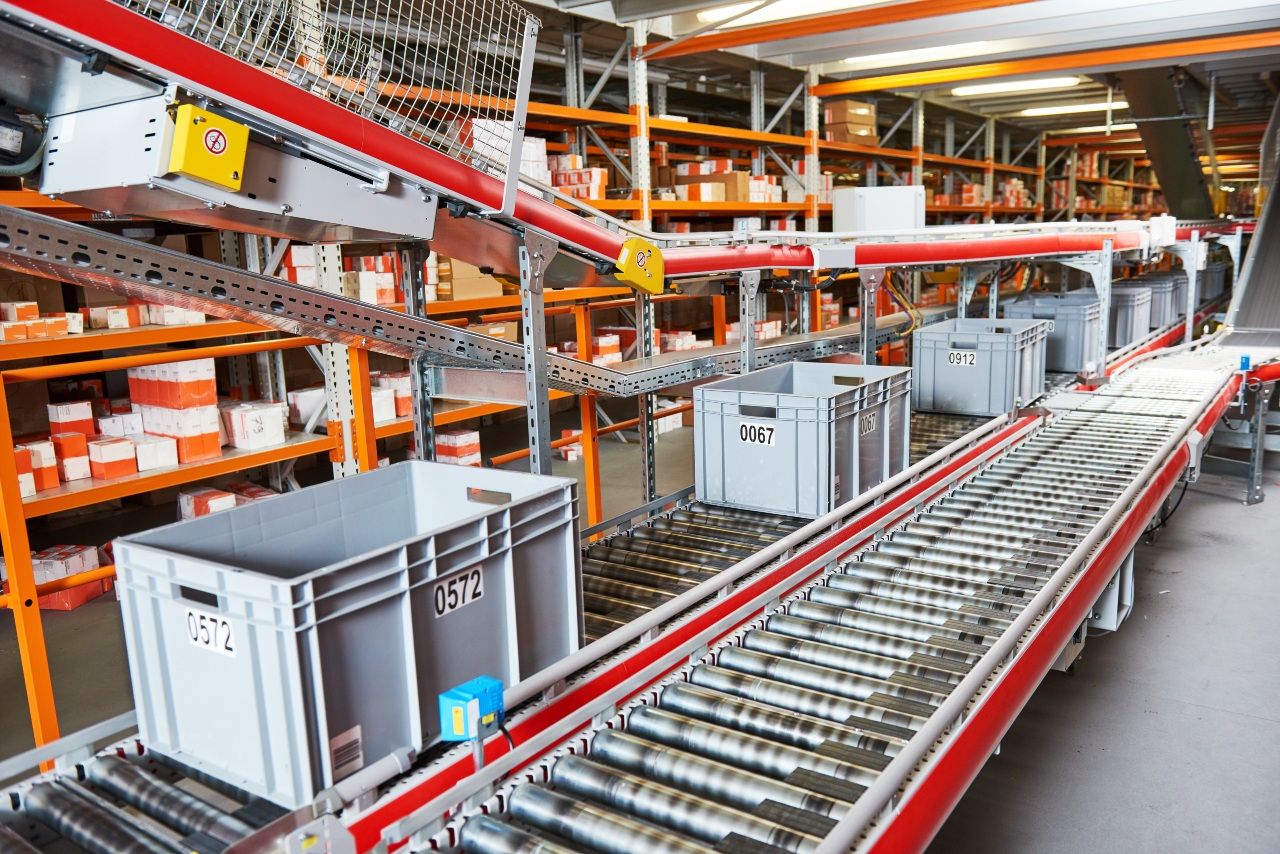Reducing manual labour costs by half for online retailer with tote bin tracking system

- World-class tracking system for ‘print to order’ book publisher
- Tote bin product identification and tracking to locate and collate over 2,500 books per hour
- Manual labour costs reduced by half
- Recently expanded system increased tote bin capacity by 50 per cent
- Now a blueprint for ‘print to order’ production lines worldwide
Powering ‘print to order’ revolution with machine vision
The Challenge
When you buy a book from the biggest online retailers, it may no longer be stored in huge warehouses to be picked and packed, but instead printed on demand each time an order is placed.
‘Print to order’ production lines are increasingly becoming the norm. Where publishers once had to print entire runs in advance, they can now reduce waste and cut costs, especially for books on niche subjects, academic textbooks or in the fast-growing world of self-publishing.
These advances in production demand new levels of performance and automation. So when a global conveyor manufacturer was commissioned to install a 500-metre book assembly conveyor for a large ecommerce retailer, it looked to Bytronic to deliver the world-class tracking system.
This conveyor system brings together the pages and covers of every new book ordered – each printed separately and transported in ‘tote bin’ containers – ready for binding.
The blueprint for successful ‘print to order’ production worldwide
Our Solution
Previously, operators had to manually pair up the tote bins for each book and cover – sometimes many metres apart – a time-consuming and fallible process.
With thousands of different books being processed every hour, the risk of incomplete or incorrect products making it through to dispatch or, worse still, to the customer, was real.
To prevent this, we developed a product identification and tracking system to identify each tote bin and follow its progress along the conveyor.
Each tote was assigned a unique code, which was then automatically scanned by a series of visual barcode readers supplied by Cognex and placed at intervals.
The data was then fed into a FIFO – first in, first out – operating system which our software used to display tote locations in real-time.
With the location of each tote displayed on screen, and colour coded to match the physical tote, they could be quickly located and collated.
Machine vision system expanded after a successful launch
The Result
Thanks to our solution, this production conveyor can now handle over 2,500 new books every hour. Manual labour costs have been reduced by half, allowing the workforce to be re-deployed to new positions along the line.
Two years on, the system has been so successful that we were asked to extend the scope of our machine vision software by 50 per cent to further increase tote bin capacity.
This line has become the blueprint for successful ‘print to order’ production, with plans to roll out the technology worldwide.





